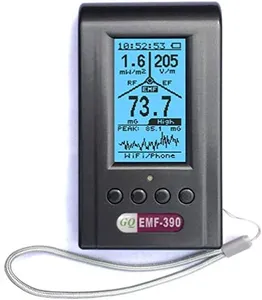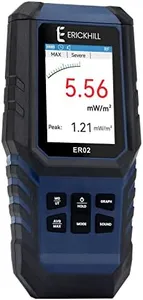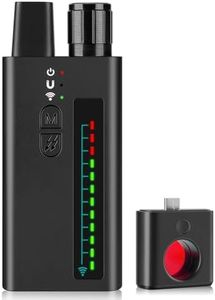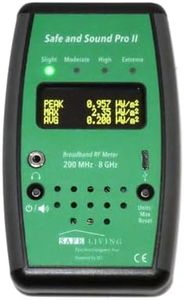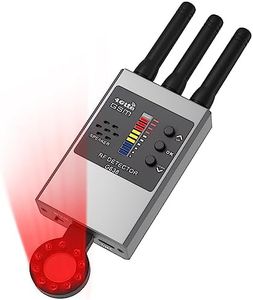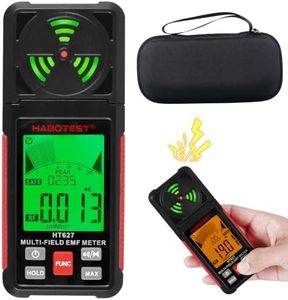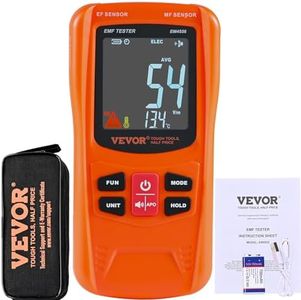We Use CookiesWe use cookies to enhance the security, performance,
functionality and for analytical and promotional activities. By continuing to browse this site you
are agreeing to our privacy policy
10 Best Rf Detector
From leading brands and best sellers available on the web.Buying Guide for the Best Rf Detector
When shopping for an RF (radio frequency) detector, you want to make sure you select a device that matches your needs, such as finding hidden cameras, discovering GPS trackers, or ensuring personal privacy in sensitive environments. Understanding the main features of RF detectors will help you choose an option that provides reliable results, is easy to use, and suitable for the types of signals or threats you want to detect. By learning about each key spec, you'll be able to make an informed decision and avoid buying a tool that's either too basic or unnecessarily complex for your situation.Frequency RangeFrequency range refers to the span of radio frequencies the detector can pick up and is one of the most important features. The wider the range, the more types of devices (like wireless cameras, microphones, phone transmitters) you can potentially detect. Devices with a narrow range might only spot basic bugs or certain transmitters, while those with a wide range can cover more sophisticated or uncommon threats. If you're only concerned about standard surveillance gadgets, a narrower range might work; but if you suspect advanced or varied types of devices, a broad frequency range will be essential.
Sensitivity AdjustmentSensitivity adjustment lets you fine-tune how responsive the detector is to signals. High sensitivity helps detect weak or distant signals, but may also pick up harmless background signals, causing false alarms. Low sensitivity focuses on closer, stronger signals. Good detectors allow you to adjust this setting, making it easier to pinpoint the location of a device. If you'll be searching in environments with a lot of wireless devices, being able to lower sensitivity is useful; for thorough sweeps or in quieter spaces, higher sensitivity is better.
Detection ModesSome RF detectors combine multiple detection methods, such as RF scanning, magnetic field detection, and camera lens detection. RF scanning picks up wireless transmission. Magnetic detection can find objects that give off a magnetic field, like certain GPS trackers when they're transmitting. Lens detection uses light reflection to spot camera lenses, even when they're not transmitting. Choose a model with the modes that match your main concerns: if you’re mainly worried about wireless bugs, basic RF is enough; for broader protection, multi-mode models are better.
Display TypeDetectors might have simple LED lights, audible alerts, vibration, or even LCD screens showing signal strength and frequency. Simple alert systems are easy for anyone to use but give less information. Detailed displays can help you interpret what's going on, especially if you're trying to distinguish between different sources. Consider how much information you want to see and your comfort with interpreting it—the more detailed the display, the more control and clarity you get, but it can also be more complex to use.
Portability and Battery LifeSince RF detectors are often used on the go for sweeping different places, their size, weight, and battery life matter. Compact and lightweight models are easier to carry, but sometimes trade off for fewer features or shorter battery life. Battery-operated models need to offer enough run time for full sweeps. Think about how long and where you'll be using it: for quick spot checks, a small, convenient model is good; for thorough sweeps or regular use, battery life and a comfortable size matter more.
Ease of UseSome RF detectors can be complicated, with lots of controls and settings, while others are much simpler and more automated. If you're new to this kind of device or just want basic checks, look for straightforward operation, clear instructions, and maybe a simple alert system. If you're comfortable with technology or need advanced settings for detailed analysis, a more feature-rich device might suit you.

